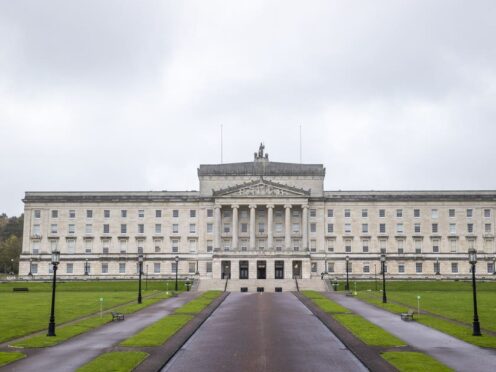Civil servants in Northern Ireland will have to face “capability and capacity” issues when examining new EU laws and assessing their consequences, MLAs have been told.
A senior official told Stormont’s Windsor Framework Democratic Scrutiny Committee that prior to Brexit, thousands of Whitehall civil servants examined the impact of new EU laws.
However, a much smaller team of Stormont civil servants will now be tasked with supporting the work of the scrutiny committee.
Under post-Brexit trading rules, aspects of EU law still apply in Northern Ireland.
The UK and EU’s Windsor Framework on the trading arrangements includes a democratic oversight function for Stormont’s Assembly, designed to give MLAs a voice in respect of proposed changes to European laws.
This includes the Stormont brake, a mechanism that allows a minimum of 30 MLAs to refer a proposed law change to the UK Government.
The Government would then make an assessment of the proposed changes on Northern Ireland and could ultimately veto its application in the region.
The Assembly committee has been established as part of the scrutiny function and its task will be to examine evidence in relation to potential changes in EU regulations and how they would affect Northern Ireland.
Giving evidence at the second sitting of the committee was Tom Reid, deputy secretary for inter-governmental and international relations in The Executive Office, who explained the role of civil servants in supporting the work of the committee.
He said: “In many cases we are looking at teams in departments that could find they have less than 48 hours to provide an assessment of the impact of both applying and not applying an EU Act, regardless of the complexities of the matter.
“Preparations for assisting the committee … have served to shine a light on the wider capability and capacity issues that are facing NICS (Northern Ireland Civil Service) in a post-EU exit environment.
“In the pre-EU exit era you had a significant proportion of the impact analysis and transposition of EU law that was conducted in Westminster.
“That was a daily job of thousands of UK civil servants.
“The reality is we are now dealing with what is a far smaller number of people here in NICS.”

Mr Reid said he was conscious that both the timeframe and the potential complexities involved with any examination or consideration of new or replacement EU Acts will be “extremely challenging for all parties”.
He added: “Going back to capability and capacity, no matter how much we increase NICS resources, we are still a small civil service, we are never having the capacity that Whitehall would have had, pre-EU exit, to deal with these matters.
“It is really, really important for us that we are working with Whitehall, we are working with Brussels, to make sure their machines are building in the capacity and the focus that needs to be there to make sure things aren’t falling through the cracks.
“When you look at (regulatory) divergence, I would be less concerned with planned divergence, where there is an understanding of the impact on Northern Ireland.
“Generally, that can be mitigated or addressed as you work through something.
“It’s the unintended divergence because someone hasn’t picked up in a piece of regulation or a piece of policy that actually there is an impact.
“To address that a huge part of it is building an understanding of our circumstances here.”
